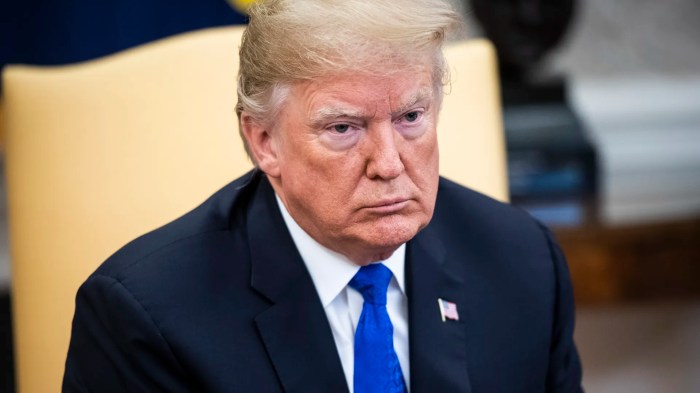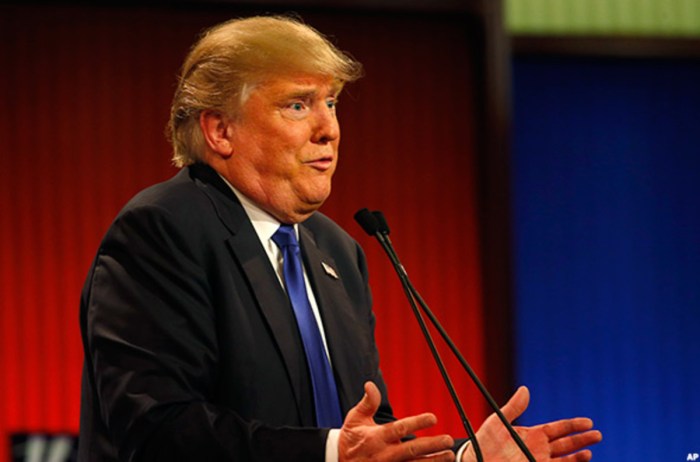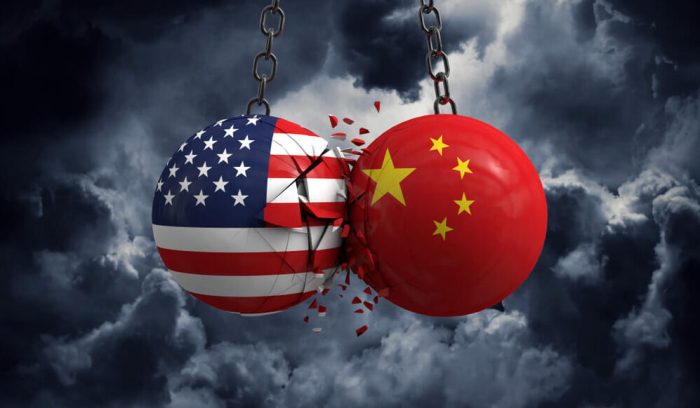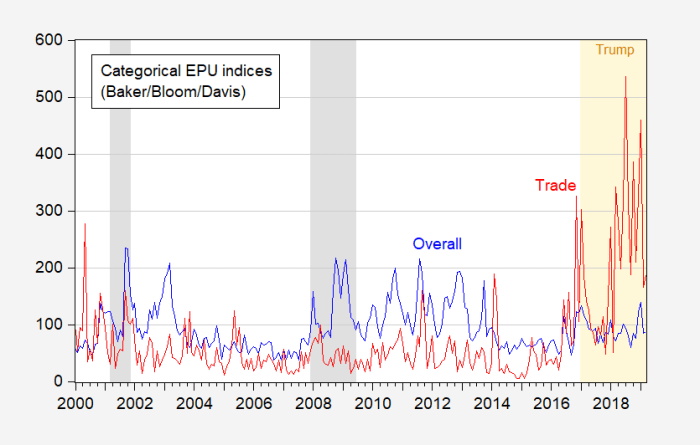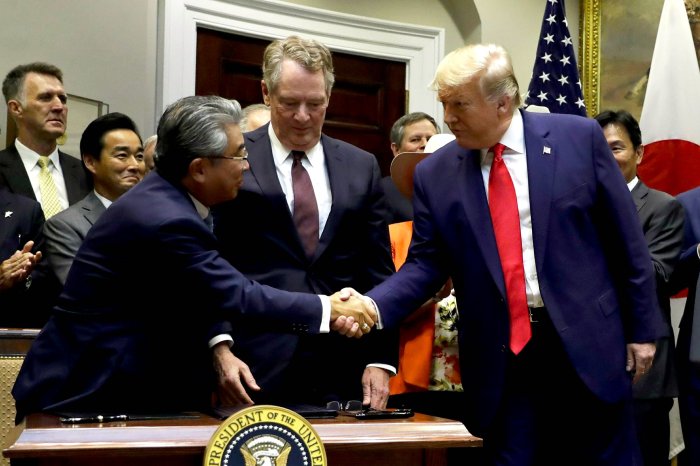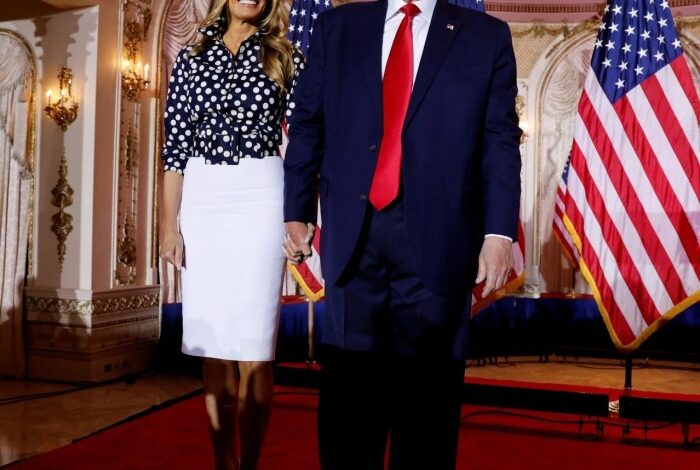
Trump says China has totally violated agreement with us tariffs, igniting a fiery debate over trade practices. This post delves into the historical context of the US-China trade relationship, examining specific agreements and Trump’s claims of violation. We’ll analyze the potential economic and international implications of this escalating dispute, and consider alternative perspectives on the validity of these accusations.
This in-depth look will cover the background of the trade dispute, Trump’s specific allegations, China’s response (if any), the economic and international relations implications, and different perspectives on the situation. We’ll examine illustrative examples of potential trade violations and discuss the potential consequences for both countries.
Background of the Trade Dispute
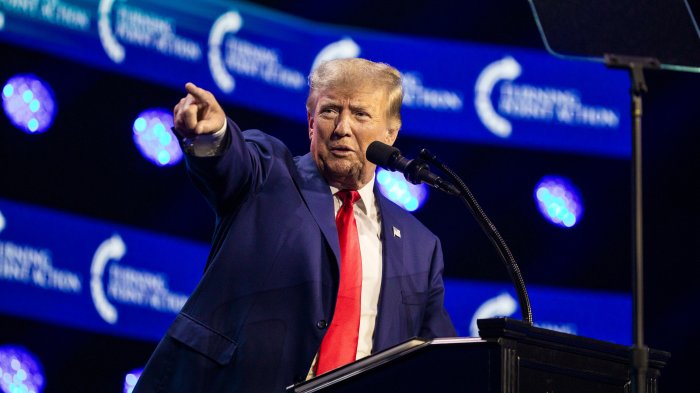
The US-China trade relationship has been a complex and often contentious one, marked by periods of cooperation and significant disagreements. From decades of engagement to trade wars, the relationship has seen dramatic shifts. This intricate history is crucial to understanding the current tensions and the context of President Trump’s statements.The relationship between the US and China has been characterized by both economic interdependence and strategic competition.
Initially, engagement focused on trade liberalization and economic integration. However, as China’s economic power grew, concerns emerged regarding its trade practices, intellectual property theft, and forced technology transfer. These concerns intensified in the 21st century.
Historical Overview of the Trade Relationship
The US and China have a long history of trade interaction, beginning with limited engagement. Significant events and agreements have shaped the relationship over time. The establishment of diplomatic relations and the subsequent opening of Chinese markets marked a pivotal point in the economic relationship.
| Date | Event | Description |
|---|---|---|
| Early 1980s – Present | Economic Engagement | The US gradually increased trade with China, leading to concerns over unfair trade practices. |
| 1999 | Normal Trade Relations | China granted Permanent Normal Trade Relations (PNTR) status, leading to increased trade volume. |
| 2001 | China’s WTO Membership | China’s entry into the World Trade Organization (WTO) further integrated it into the global economy, while also highlighting trade imbalance concerns. |
| 2018-2020 | US-China Trade War | President Trump initiated a trade war with China, imposing tariffs on various goods. |
Specific Trade Agreements and Tariffs
President Trump’s statements reference various trade agreements, including those related to intellectual property rights, market access, and technology transfer. These agreements, alongside other trade policies, formed the backdrop to the escalating trade tensions.
Context of Trump’s Statement
Trump’s statement, asserting that China had violated trade agreements and that tariffs were prepared and addressed, likely stemmed from perceived breaches of existing agreements by China. This assertion needed further details for verification.
Existing Trade Policies and Tariffs
The US and China have implemented various trade policies and tariffs in response to perceived trade imbalances. These policies often target specific sectors and goods. The complexities of the trade policies are a key element in understanding the ongoing trade dispute.
Trump’s Specific Allegations
President Trump frequently accused China of violating trade agreements, often citing unfair trade practices and intellectual property theft as primary concerns. These accusations were a cornerstone of his “America First” economic policy, leading to significant trade tensions and tariffs imposed on Chinese goods. Understanding the specific allegations is crucial to assessing the validity and motivations behind these actions.Trump’s claims often revolved around China’s failure to live up to commitments made in trade agreements, particularly regarding intellectual property rights and market access.
The specific actions and inactions cited were frequently presented as evidence of China’s strategic manipulation of the global trade system, and the accusations fueled significant economic uncertainty.
Specific Allegations of Trade Violations
Trump’s accusations targeted various aspects of China’s trade practices. He asserted that China engaged in unfair trade practices, including forced technology transfer, subsidized exports, and the theft of American intellectual property. These claims were central to his justification for imposing tariffs.
Evidence Presented by Trump (or Lack Thereof)
The evidence presented to support Trump’s claims varied in its nature and persuasiveness. Often, these claims were based on statements from administration officials, reports from trade organizations, and anecdotal evidence, but robust empirical data supporting these accusations was often lacking or highly disputed by experts. Furthermore, Trump’s claims were frequently intertwined with broader geopolitical tensions, making a clear separation of economic and political factors challenging.
Potential Interpretations of Trump’s Statements
Several interpretations could be applied to Trump’s statements on China’s trade violations. One interpretation suggests a sincere belief in China’s unfair trade practices and a desire to protect American interests. Another interpretation highlights the political context, suggesting that the accusations were strategically used to gain domestic support and pressure China for concessions. It’s also possible that a combination of economic and political motivations influenced Trump’s statements.
Motivations Behind Trump’s Accusations
Trump’s accusations likely stemmed from a complex interplay of factors. Economic concerns, such as the trade deficit with China and the loss of American manufacturing jobs, likely played a significant role. Political considerations, including a desire to appear tough on trade and to appeal to certain segments of the American electorate, might have also influenced his approach. Furthermore, the broader geopolitical context, with escalating tensions between the United States and China, could have influenced Trump’s actions.
Summary Table of Accusations
| Accusation | Supporting Evidence (if available) | Potential Interpretations |
|---|---|---|
| Forced Technology Transfer | Anecdotal reports, claims by US companies | Sincere belief in Chinese coercion, or a political tactic to pressure China |
| Subsidized Exports | Government reports on Chinese subsidies, industry analysis | Concern about unfair competition, or a negotiating tactic |
| Intellectual Property Theft | Reports of IP infringements, complaints from US companies | A genuine concern about theft, or a broader political point |
| Failure to Open Markets | Limited access to Chinese markets for US companies | A desire for greater market access for US firms, or a negotiating tool |
China’s Response to Trump’s Trade Accusations
The trade war between the United States and China, ignited under the Trump administration, became a defining feature of global economic relations. Trump’s accusations of China violating trade agreements were central to this conflict, leading to significant economic repercussions for both nations. Understanding China’s response is crucial to comprehending the full scope of this complex trade dispute.China’s official response to Trump’s accusations was multifaceted and often framed in the context of defending its economic interests and trade practices.
Trump’s claims about China violating trade agreements are certainly significant, but it’s worth considering the broader context. His administration’s actions, like trumps executive order gender abortion rights , highlight a pattern of executive orders impacting various sectors. Ultimately, these actions often create ripple effects, which can complicate international relations, just as Trump’s stance on tariffs with China does.
Beijing consistently countered Trump’s claims with arguments about fairness and the legitimacy of its own economic policies. This response, however, was often perceived as less forceful than Trump’s rhetoric, possibly due to China’s broader strategic goals and the complexities of the global economic environment.
China’s Official Statements and Counterarguments
China’s response to Trump’s trade accusations often involved official statements from government agencies and spokespeople. These statements typically emphasized China’s adherence to international trade rules and the fairness of its economic policies. China often argued that the tariffs imposed by the US were unjustified and retaliatory, harming both economies. For example, China might highlight instances where the US had not followed agreed-upon trade terms, implying that the tariffs were a form of unfair trade practice.
Economic Impact of Tariffs on Both Countries
The tariffs imposed by both countries had significant economic consequences. In the US, industries relying on Chinese imports faced higher costs and reduced profitability. Consumers, too, experienced higher prices for certain goods. In China, export-oriented industries suffered, leading to job losses and economic slowdown in some sectors. The overall economic impact was substantial and far-reaching, affecting supply chains and global trade flows.
The imposition of tariffs resulted in decreased trade volumes, and uncertainty in the global market.
Trump’s claim that China has completely broken the trade agreement regarding tariffs is certainly a hot topic. Meanwhile, the Dodgers and Padres are facing off for the first time in a while, in a highly anticipated clash, rival dodgers padres clash first time since 24 nlds , which is a big deal for baseball fans. This rivalry adds a different layer of intrigue to the ongoing trade tensions, but ultimately, the dispute over the tariffs remains a significant issue.
Timeline of the Dispute and Subsequent Actions
- 2018: Trump initiated a series of tariffs on Chinese goods, citing concerns over intellectual property theft and unfair trade practices.
- 2018-2020: A period of escalating tariffs and counter-tariffs ensued. Negotiations and trade agreements were attempted but faced significant challenges.
- 2020: A partial trade deal was reached, with both sides agreeing to some concessions.
Comparison of Statements by Both Sides
| Aspect | United States (Trump Administration) | China |
|---|---|---|
| Allegations | China violated trade agreements by engaging in unfair trade practices, intellectual property theft, and forced technology transfer. | US tariffs were unjustified, retaliatory, and harmful to both economies. US accusations were not supported by sufficient evidence. China emphasized its adherence to WTO rules and its commitment to fair trade. |
| Counterarguments | China’s practices were detrimental to US interests. | China’s policies were consistent with its own economic development goals and were legitimate under international trade regulations. |
| Economic Impact | Higher prices for consumers, reduced profitability for some US industries. | Reduced exports, job losses in some sectors, and disruption of supply chains. |
Economic Implications
The escalating trade dispute between the US and China carries significant economic ramifications, potentially impacting both domestic economies and global markets. Tariffs, imposed as a response to perceived trade violations, introduce complexities into international trade flows and production chains, potentially leading to increased costs and reduced consumer choice. Understanding the ripple effects is crucial to assessing the long-term consequences of this ongoing conflict.
Impact on US Industries
US industries reliant on Chinese imports face potential challenges due to increased costs and reduced availability of goods. Tariffs raise the price of imported components and finished products, impacting businesses that use them in their own production processes. This can lead to reduced competitiveness in global markets. For example, manufacturers in the automotive sector, heavily reliant on Chinese-made parts, may see higher production costs, potentially leading to price increases for consumers.
Impact on Chinese Industries
Chinese industries exporting to the US are directly affected by tariffs. These tariffs reduce demand for Chinese goods in the American market, leading to potential job losses and economic downturn in specific sectors. The agricultural sector in China, for instance, is particularly vulnerable as the US is a significant market for Chinese agricultural exports. Furthermore, the disruption of supply chains can hinder China’s ability to compete globally.
Impact on Global Markets
The trade war between the US and China has broader implications for global markets. The uncertainty surrounding trade policies creates a climate of fear and hesitancy, potentially impacting investment decisions and international trade flows. The ripple effect extends to other countries reliant on the US-China trade relationship. For example, countries that export goods to both the US and China could face reduced demand and economic hardship.
The potential for retaliatory tariffs from other countries adds another layer of complexity to the global economic landscape.
Impact on Consumers
Consumers in both countries are likely to feel the impact of the trade dispute through higher prices for goods and reduced availability of choices. Increased costs due to tariffs translate into higher prices for imported goods, affecting everything from electronics to clothing. Reduced competition among suppliers can also limit consumer options, further impacting the affordability and variety of products available.
Table: Industry Impacts of the Trade Dispute
| Industry | Impact | Affected Regions |
|---|---|---|
| Automotive | Increased production costs, potential price increases for consumers | US, China, globally (depending on supply chain) |
| Consumer Electronics | Higher prices for imported components and finished products, reduced choice for consumers | US, China, globally |
| Agricultural Products (US) | Reduced exports to China, potential financial losses for farmers | US, China |
| Agricultural Products (China) | Reduced exports to US, potential financial losses for farmers | US, China |
| Manufacturing (General) | Increased costs due to tariffs on raw materials and components, impacting production efficiency and profitability | US, China, globally |
International Relations Implications: Trump Says China Has Totally Violated Agreement With Us Tariffs
The US-China trade dispute transcends mere economic considerations; it profoundly impacts global political and economic landscapes. The escalating tensions ripple through international trade relations, casting a shadow over diplomatic efforts, and potentially destabilizing the global economic order. Understanding the intricate web of international relations implications is crucial for navigating this complex challenge.
Potential Impact on Broader International Trade Relations
The trade war between the US and China has set a precedent for other nations to adopt protectionist measures. This could lead to a decline in global trade volume as countries become more wary of international agreements and opt for bilateral deals, potentially creating trade blocs and fragmenting the global economy. Increased trade friction between the US and China might embolden other nations to engage in similar protectionist strategies, hindering the free flow of goods and services across borders.
Effects on Diplomatic Relations Between the US and China
The trade dispute has strained diplomatic relations between the US and China, hindering cooperation on global issues. The inability to effectively communicate and resolve the trade imbalances has led to a decline in mutual trust and confidence. This breakdown in diplomatic relations has repercussions for international cooperation on issues such as climate change, pandemics, and global security.
Possible Strategies for Resolving the Trade Dispute
Several strategies could be employed to resolve the trade dispute, including: negotiation and compromise, mediation by third parties, and adherence to established international trade rules. Negotiations aimed at finding common ground on trade imbalances and intellectual property rights are essential. Mediation by a neutral third party can facilitate communication and bridge the gap between the two sides. Adhering to established international trade rules, such as those set by the WTO, can provide a framework for resolving disputes fairly and predictably.
Potential Influence on Global Economic Stability
The prolonged trade war has demonstrably impacted global economic stability. Uncertainty about future trade policies discourages investment, hinders economic growth, and potentially increases volatility in financial markets. The trade war’s effects are not limited to the US and China. The ripple effects across global supply chains have contributed to rising inflation and reduced purchasing power in many countries.
A good example is the impact on commodity prices, which are directly affected by the availability of goods in international markets. Reduced global trade often leads to higher prices for consumers.
Summary Table: Potential Impacts on International Relations and Diplomacy
| Aspect | Potential Impact |
|---|---|
| International Trade Relations | Increased protectionism, decline in global trade volume, fragmentation of the global economy |
| Diplomatic Relations (US-China) | Strained relations, reduced cooperation on global issues, erosion of trust |
| Dispute Resolution Strategies | Negotiation, mediation, adherence to international trade rules |
| Global Economic Stability | Reduced investment, slower economic growth, increased market volatility, rising inflation |
Alternative Perspectives on the Dispute
The Trump administration’s trade war with China, marked by escalating tariffs, sparked a complex debate encompassing various viewpoints. Beyond the headlines and political rhetoric, nuanced perspectives emerged, highlighting potential misinterpretations and underlying motivations. Examining these alternative perspectives provides a more comprehensive understanding of the dispute’s intricacies.
Diverse Interpretations of China’s Compliance
The Trump administration’s assertion of China’s non-compliance with trade agreements required careful scrutiny. Different experts offered contrasting analyses of China’s adherence to the terms of the agreements. Some argued that China’s actions, while potentially frustrating, did not necessarily constitute a complete violation, while others maintained that the violations were significant and warranted the tariffs.
- Some economists argued that China’s actions, such as intellectual property theft and forced technology transfer, while problematic, may not fit the strict legal definition of a “violation” under existing trade agreements. They highlighted the complexities of international trade laws and the difficulty in proving specific breaches. For example, they might point to cases where proving the intent behind certain actions is challenging, making it hard to definitively label them as violations.
- Conversely, other trade experts and government officials contended that China’s practices clearly constituted violations of agreed-upon commitments. They emphasized specific instances of intellectual property theft, forced technology transfer, and unfair trade practices, arguing that these actions significantly undermined the intended outcomes of the trade agreements. For example, evidence of large-scale intellectual property theft, documented by organizations like the US Chamber of Commerce, could be cited as evidence of significant violations.
Potential Biases in Reporting
The media coverage surrounding the trade dispute often reflected varying degrees of bias. It’s crucial to consider potential influences on news reporting, such as political affiliations, financial interests, and the pressures of journalistic deadlines. These factors could shape the narrative and influence public perception.
Trump’s claims about China violating trade agreements are definitely stirring things up. Meanwhile, a totally different kind of drama unfolded in baseball, where Alejandro Kirk’s heroics lifted the Jays to a 10-inning victory over the Cardinals. Alejandro Kirk’s clutch performance highlights the contrasting worlds of sports and international trade, but ultimately, Trump’s assertions about China’s alleged violations of trade deals remain a significant point of contention.
- Some analyses suggest that media outlets with pro-Trump leanings might have emphasized the severity of China’s alleged violations, while those with a more neutral stance might have presented a more balanced account. For instance, reporting on the trade deficit might be framed differently by various news outlets, depending on their underlying editorial perspectives.
- Furthermore, reporting on China’s economic policies might have been influenced by the ongoing geopolitical tensions between the two countries. This potential for bias necessitates a critical evaluation of the information presented, encouraging readers to seek diverse perspectives to form a comprehensive understanding.
Political Motivations, Trump says china has totally violated agreement with us tariffs
The trade dispute could be viewed as a complex interplay of economic and political considerations. Political motivations, such as domestic pressure, reelection campaigns, and strategic maneuvering on the global stage, could have played a significant role. For example, the need to address public concerns about job losses and trade imbalances might have influenced the administration’s decision-making.
- Domestic political pressure to address trade imbalances and job losses likely influenced the administration’s approach to the dispute. Public perception of China’s trade practices may have also played a role, particularly during an election year.
- Strategic considerations in the broader geopolitical landscape may have influenced the decision-making process. The administration’s desire to project American strength and influence on the world stage could have been a motivating factor. For example, the tariffs could have been viewed as a tool to assert American power in the global trade system.
Summary of Viewpoints
| Perspective | Supporting Arguments |
|---|---|
| China’s actions do not constitute a complete violation | Complexities of international trade law, difficulties in proving intent, focus on economic incentives rather than malicious intent. |
| China’s actions are significant violations | Documented cases of intellectual property theft, forced technology transfer, and unfair trade practices; emphasis on the economic consequences of these actions. |
| Media bias may have influenced public perception | Potential for pro-Trump leanings, political pressures, and geopolitical tensions affecting reporting; need for diverse sources and critical evaluation. |
| Political motivations influenced the dispute | Domestic pressure to address trade imbalances, strategic maneuvering on the global stage, potential influence of reelection campaigns. |
Illustrative Examples of Trade Violations
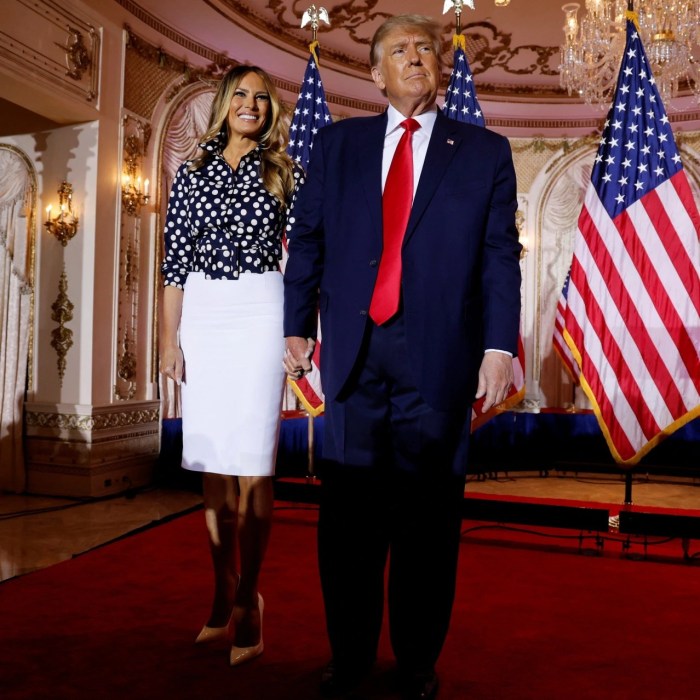
The ongoing trade dispute between the US and China highlights complex issues surrounding trade practices. Understanding these issues requires examining specific examples of potential violations, considering both sides of the narrative, and assessing the impact of such actions. This section provides concrete illustrations of alleged trade violations, relating them to Trump’s claims and the broader economic and political context.
Potential Chinese Violations: Intellectual Property Theft
China’s alleged systematic theft of intellectual property is a recurring concern in the trade dispute. This involves companies obtaining trade secrets or copyrighted materials without permission, often through forced technology transfer or other unfair practices.
- Forced Technology Transfer: Chinese government policies may require foreign companies to share their technology with local partners as a condition for operating in the market. This can lead to the loss of proprietary information and give Chinese competitors an unfair advantage. Examples of this include specific sectors like telecommunications or semiconductors.
- Counterfeiting and Piracy: The prevalence of counterfeit goods, including branded clothing, electronics, and pharmaceuticals, originating in China, demonstrates a disregard for intellectual property rights. This impacts legitimate businesses and consumers, and significantly harms international trade relations.
Potential Chinese Violations: Non-Tariff Barriers
Non-tariff barriers, such as excessive bureaucratic hurdles, complex safety regulations, or discriminatory standards, can impede the free flow of goods and services. These barriers can be hard to quantify, making it difficult to demonstrate their exact impact.
- Discriminatory Regulations: Regulations that apply more stringently to foreign companies than to domestic companies create an uneven playing field. This is a subtle but significant barrier to fair trade. This is often observed in sectors like food processing or automotive manufacturing.
- Unjustified Inspections and Delays: Lengthy customs procedures or inspections that disproportionately affect foreign goods can act as a non-tariff barrier. This is particularly problematic for companies with perishable products or those needing rapid turnaround times.
Potential US Violations: Unfair Trade Practices
While often focused on China, the US also faces accusations of violating trade rules. These often involve anti-dumping measures or tariffs imposed on specific products.
- Anti-Dumping Duties: The imposition of anti-dumping duties on Chinese products, while claimed as a response to unfair trade practices, can be challenged as retaliatory or motivated by protectionist interests. Historical examples of such actions show that anti-dumping measures are not always based on objective evidence of dumping.
- Trade Protectionism: The application of tariffs to protect domestic industries can harm international trade relationships. Such policies have been used to shield US industries from foreign competition. Examples of this include tariffs imposed on steel and aluminum imports.
Impact in News Reports and Policy Briefs
News reports and policy briefs would highlight these examples with specific data and evidence. They would include details about the products involved, the companies affected, and the alleged violations. These reports would typically analyze the impact on specific sectors and the wider economy. For instance, a report on intellectual property theft might include case studies of specific companies that experienced losses due to these practices.
Closure
In conclusion, Trump’s accusations against China regarding the violation of trade agreements raise significant questions about the future of US-China relations and the global economy. The economic implications, the potential for escalating tensions, and the diverse perspectives on the dispute are all crucial factors to consider. This analysis offers a comprehensive overview of the situation, encouraging readers to form their own informed opinions on this complex and multifaceted issue.

